Betty White and Making the Case That Years of Experience Matter


U.S. President Barack Obama talks with Betty White in the Oval Office in June 2012.
Editor's note: You're not too late to support the work and passion of Betty White - as in animal welfare. Among the various organizations that still support her lifelong cause, the Commerce Street Brewery Hotel, in Mineral Point, Wisconsin, the hometown of White's late husband, Allan Ludden, is still running their "Buy Betty White a Beer" promotion. All proceeds go to local animal welfare charities.
Betty White was an outlier. Rarely does anyone have a career that spans as long as eight decades in any sector – much less within an industry that often values youth, connections and looks over experience. Of course, part of the resilience that White had demonstrated over the years was her ability to adapt to any medium, whether she worked in radio, live television, soaps, sit-coms and of course, her epic hosting of Saturday Night Live in 2010:
It’s true, Betty White was a standout, in part because of her demeanor and timeless likability. She also had a relentless work ethic, as her assistant, Kiersten Mikelas, pointed out in the tribute (it was originally planned to be a celebration of White becoming a centenarian) that ran in movie theaters on what would have been her 100th birthday on January 17. Mikelas pointed out that near to the very end, White insisted on having a fully booked schedule – in fact, she got job offers even last month – as well as tackling what to many would appear to be mundane tasks such as answering fan mail.
Clearly, they broke the mold when Betty White came into our TV sets and our lives, and there will never be another one like her. Nevertheless, the traits she showed time and time again – her decision making skills (she turned down an offer to work as a host on The Today Show in the 1970s, knowing the gig wasn’t right for her); her productivity that only increased with age; undeniable motivation; and her ongoing focus on doing her job and doing it well offer a reminder of why older citizens should be seen as valued members of our society, including the workplace.
As Kerry Hannon summed up for Forbes a few years ago, “Older workers tend to be poised and self-assured. The best employees are those who bring a mix of confidence and expertise–that combo shines with the rich patina that comes with age.”
Nevertheless, bias against people in the workplace over 50 endures. The usual tropes are repeated: People closer to retirement age than legal drinking age can’t or won’t adapt, cannot pick up technology quick enough, lack the skills crucial for the economy of the 2020s, and so forth.
Researchers at the Harvard Business Review are among those who have put those assumptions to rest.
“The scientific evidence on this issue shows differently: For most people, raw mental horsepower declines after the age of 30, but knowledge and expertise — the main predictors of job performance — keep increasing even beyond the age of 80,” Josh Bersin and Tomas Chamorro-Premuzic wrote in September 2019. “There is also ample evidence to assume that traits like drive and curiosity are catalysts for new skill acquisition, even during late adulthood. When it comes to learning new things, there is just no age limit, and the more intellectually engaged people remain when they are older, the more they will contribute to the labor market.”
We’re not saying to everyone that it simply up to you to chin up, you’ll become the Betty White of your industry. Nevertheless, the grit that was behind her sunny disposition allowed her to forge ahead offers those of us who are over 40 some optimism that if we play our cards right, we can have fulfilling careers long past Social Security age.
The hard part, however, is convincing the hiring managers and human resources staffers of the world that this is the case, even though plenty of evidence out there backs up these claims.
Image credit: Pete Souza via Wiki Commons
Energy-Saving Water Technologies Could Bring the World Closer to Net Zero
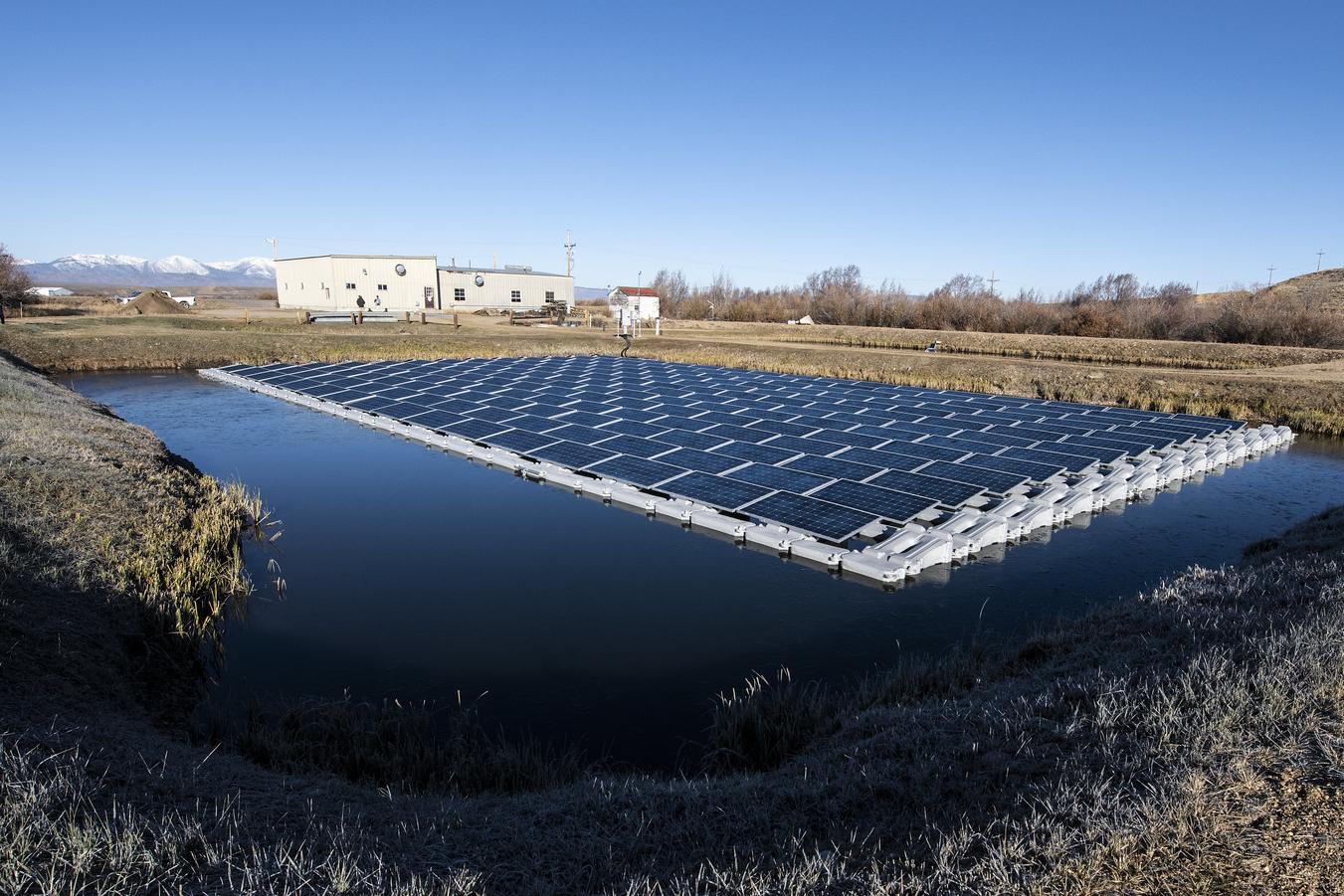
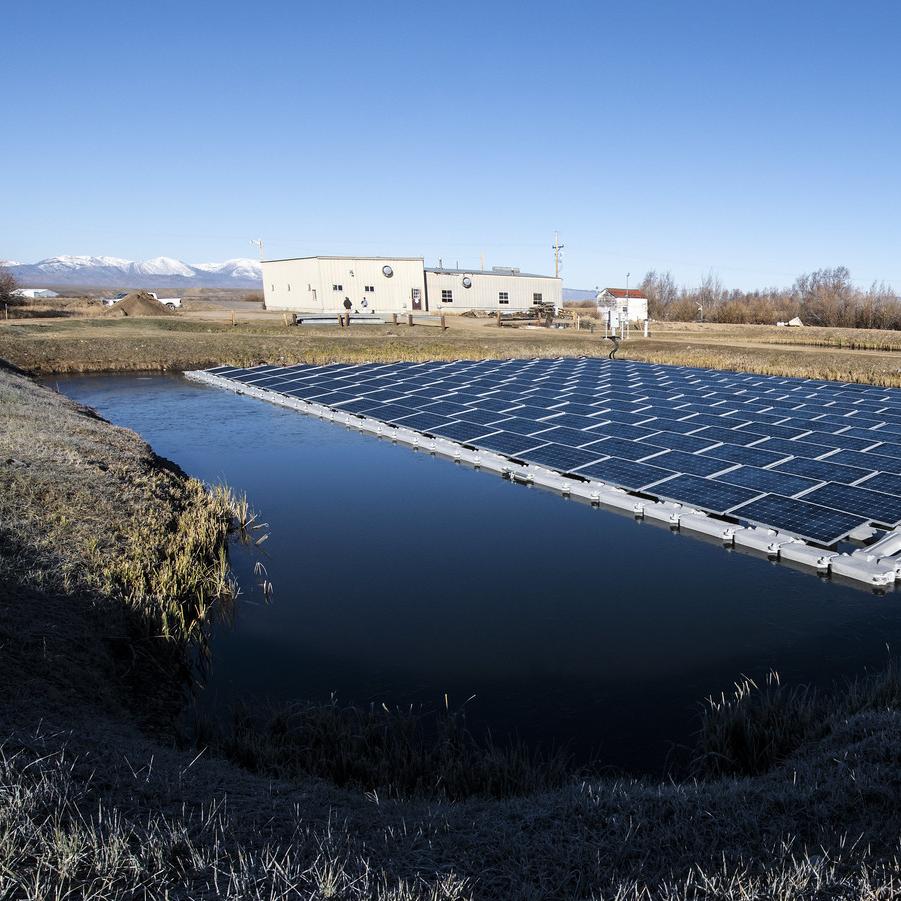
A floating solar array on a retention pond at the local water treatment facility in Walden, Colorado. (Image courtesy of the National Renewable Energy Laboratory)
Water is one of the most visible signs of climate change, whether it is too much or not enough. But until recently, it mostly was seen as primarily a climate adaptation and resilience concern. The fact is, however, that water also can play a powerful role in climate mitigation. During the recent COP26 climate negotiations, water as a mitigation tool received more attention than it had at previous talks. As the world looks to find emissions reductions wherever it can, the water sector has a host of technologies to help.
Water and climate change
The global water system’s true impact on climate change often is hidden from view because it comes from the energy needed to pump, treat and heat water. Further, in a vicious cycle — given that fossil fuel- and nuclear-powered electricity generation also use copious amounts of water, if they are the main source of energy — the locality in question is effectively using water to treat water.
Further, in the U.S. water infrastructure is buckling with age and stress, leading to leaks that amount to water (and energy) flushed away — not to mention the loss of revenue and increased operational costs for local utilities, as well as unnecessary carbon emissions.
The role of water and wastewater utilities
Water and wastewater utilities have been aware of the problem for a long time, but many of these utilities, which often are municipally owned and/or operating on razor-thin budgets, have been unable to do much about it. Instead, they have had to focus on plugging leaks (literally) rather than instituting innovative solutions. With more attention and support from the larger climate community, however, utilities are finding available technologies and strategies to design sustainability and resilience into their operations.
Discussions around climate mitigation, adaptation and resilience are now at the forefront in a way they were not a decade ago, Jim Schlaman, Director of Planning and Water Resources for Black & Veatch’s Government and Environmental business, told TriplePundit. “It has been interesting to hear the change in tone toward more ESG (environmental, social and governance) goals and metrics.”
“There’s discussion among many water utility leaders to have water utilities sign up for net zero goals, for example,” he added. “Five years ago, you'd rarely hear it mentioned, but now, utilities are talking about implementing strategies to reduce carbon emissions, plan and implement infrastructure more sustainably, and drive resilience into all of their practices. We’re on the precipice of seeing utilities change how they plan, implement, and operate infrastructure and their enterprises in more sustainable and resilient ways.”
JC Alonzo, a member of the climate solutions team within Black & Veatch’s environmental services division, agreed. “You used to have to hammer on people just to get them to listen to you about environmental issues,” he told us. “Water utilities are starting to understand that their responsibility for operating the business goes beyond moving water through the pipes.”
What utilities can do
Now that the conversation has shifted from if to how, companies such as Black & Veatch — a global consulting, engineering and construction firm — find themselves poised to advise water and wastewater utilities and authorities about the options.
One of the places to start is by having water authorities look beyond capital costs and plan for lifecycle costs. “A more sustainable project doesn’t mean more costly,” Schlaman said. “Typically, when people think that, it’s because they didn’t consider sustainable principles until the end of design. However, if you build sustainable thinking into your upfront capital planning efforts and incorporate it as part of your standard operating procedures, you can find opportunities to deliver higher value projects as they relate holistically to environmental, social, and financial aspects.” For example, a new project that Black & Veatch is developing with a client in Nevada deployed genetic algorithms and computer optimization during the planning stage to evaluate environmental and performance trade-offs, find good balance between capital and lifecycles costs, and improve the overall resilience of the system.
A key component to remember is that the landscape of water and wastewater utilities is vast, ranging from tiny municipal offices within a department to national corporations and everything in between. The larger ones often have good asset management programs, while the smaller ones may struggle to employ a person who also has several other areas of responsibility. The good news is that innovation runs downhill: When larger utilities invest in energy-saving water technologies at scale, it lowers the cost for the smaller ones. Information sharing also is critical.
Information-sharing lays the groundwork for energy-saving water technologies
Recognizing that water and energy systems are integrated is equally important, and not always top of mind, Schlaman said. “From a vulnerability perspective, our systems are more integrated than we thought they were, so we need coincident risk planning,” he told us. For example, the Texas city of Round Rock, just north of Austin, spent money on backup generators and preparedness planning more than a decade ago, and they were the only utility in the Austin metropolitan area that did not have to issue a boil notice during Winter Storm Uri in February 2021.
Utilities often have historically considered flooding impacts but are now thinking more about coincident risk/vulnerability planning related to the power, transportation, cyber, and supply chain systems that serve them, Schlaman added. For example, the increased deployment of microgrids is now gaining ground with water and wastewater utilities as a way to provide less dependence on a centralized grid, more flexibility in how they access power during disruptive events, greater financial flexibility to offset peak demand charges, and greater overall utility resilience .
Being off the main grid and investing in reliability measures on a smaller scale can end up being a lifesaver in an extreme weather event. Black & Veatch also has noticed an uptick in the use of renewable energy by water utilities to generate their power, with solar being a popular option. Since many water utilities rely on reservoirs, technologies such as floating solar can both lower evaporation rates and increase the efficiency of the panels themselves. Wastewater plants in particular offer opportunities for biogas recovery during wastewater treatment, which then can be used to power the plant’s operations or sold back to the grid.
Other technologies are emerging as demand increases for climate solutions. In-pipe hydropower and micro-turbines are passive energy systems that can run pump stations. Battery systems also increasingly are used to provide backup energy for pump stations so they no longer have to rely on diesel generators. The city of Portland, Oregon, has used in-pipe units since 2015, saving enough energy to power several hundred homes.
Alonzo sees a parallel with the consumer tech industry as technologies continue to get smaller and less expensive, which is a good thing for resource-strapped utilities. And Schlaman added that the megatrend in the industry is a shift toward digitization. Now that utilities are improving their data collection, they are better equipped for data optimization and the deployment of water smart grids.
Planning for the future
None of this technology deployment is possible without effective planning. Utilities in cities such as Kansas City and Tampa — both on the front lines of climate change — are figuring out new ways to approach water planning, including clear delineation of roles and responsibilities and extensive scenario planning built into their master plans, Schlaman said.
“There’s a big push toward dynamic master planning,” he said. “We generate digital tools with cash-flow models so utilities can perform adaptive capital planning and prioritization as needed. We can leverage modern computing power and genetic algorithms to test thousands of potential scenarios, evaluate multiple and uncertain futures, and develop strategies to improve the utility’s resilience and reliability.”
Another tool being used more often in the industry is the Envision Infrastructure rating system, a guidance tool that takes planners through potential impacts of projects relative to the triple bottom line, looking at environmental and social issues. And companies are starting to use Envision to guide and verify the sustainability of their projects, much like LEED does with buildings, Alonzo added.
All in all, the fact that the water sector is being brought in as an integral partner in climate change solutions means it is easier to share information and communication, Schlaman concluded. “There is a lot of overlap with the [U.N. Sustainable Development Goals], entire training courses on how to achieve SDGs. It’s comprehensive without being prescriptive, and a lot of utilities are adopting these strategies to help plan and implement a more sustainable and resilient future.” Different sectors that are inextricably linked and historically siloed now are speaking the same language, making solutions more effective and efficient — and closer in reach than we may have thought.
This article series is sponsored by Black & Veatch and produced by the TriplePundit editorial team.
The Real Culprit That’s Driving the Great Resignation


You’ve probably overheard the mutterings at supermarkets, coffee shops and restaurants: “They really need to find workers.” “Why does everything have to take so long?” “People are just greedy and don’t want to work.” Of course, such attitudes on the behalf of customers and clients are in part fueling what we’ve been calling the Great Resignation. But researchers at MIT have found what they say are the overriding factor in people fleeing their jobs.
Donald Sull, Charles Sull and Ben Zweig have scoured through the data of 34 million online employee profiles from several months last year to get a handle on employee attrition rates. They focused on the “Culture 500,” a roster of large organizations, mostly companies, that employ about 25 percent of private-sector workers across the U.S.
Ascertaining the true reason for a person’s reason to quit a company is difficult to gauge, starting with the fact that what an employee documents during the exit interview versus what they say publicly online or in confidence to friends and family could be entirely different. Nevertheless, the authors of this study say they were able to measure the drivers that have pushed employees to search for what they believe are greener pastures.
So, what is the top predictor of attrition during the Great Resignation by far? A toxic corporate culture is what drove many employees to the breaking point, at a rate three times or even more than other factors such as fears about job security, a highly innovative culture, the failure to recognize an employee’s job performance and a bad response to the COVID-19 pandemic. “Our analysis found that the leading elements contributing to toxic cultures include failure to promote diversity, equity, and inclusion; workers feeling disrespected; and unethical behavior,” the authors said.
But what about that one factor in particular, a highly innovative culture? True, employees love to talk about innovation – it has reached the point that the very word “innovation” has become a buzzword to a level at which it has lost any meaning. Yet a highly innovative environment also means longer work hours, more stress and a more frantic pace, noted the MIT study. At a time when people frequently had to balance kids, parents and home in an oft-isolated world, it’s no wonder many talented employees sought a different change of pace.
One caveat this study has found that companies with the reputation of having a healthier work culture than their peers were able to sustain though the pandemic with low attrition rates. The MIT authors named Southwest Airlines, Johnson & Johnson, Enterprise Rent-A-Car and LinkedIn as companies that experienced low employee turnover rates last year even while the Great Resignation gained momentum.
Nevertheless, many industries witnessed employees leaving in droves. It’s no surprise that the clothing retail and fast food industries ranked as one and five in the industries experiencing the overall highest rates of attrition. But wedged between those two sectors were management consulting, internet and enterprise software companies, suggesting that the Great Resignation boasts the ranks of hourly wage- and high salaried workers alike.
So at a high level, what do employees want, or what can employees to avoid having to post yet another job opening on Indeed or LinkedIn? Based on all those millions of profiles, this MIT crew suggest taking these four steps as a start: offering lateral career opportunities; ensuring remote work is still an option; company-sponsored social events; and in case the retail and food service industries haven’t noticed, more predictable work schedules.
“More fundamentally, we found that corporate culture is more important than burnout or compensation in predicting which companies lost employees at a higher rate than their industries as a whole,” concluded this study’s authors. “A toxic corporate culture is the single best predictor of which companies suffered from high attrition in the first six months of the Great Resignation.”
Image credit: Jackson Simmer via Unsplash
DirecTV, OAN and the Limits of Both-Siderism


The U.S. Capitol on January 9, 2021.
Airing “both sides of the story” has always been a somewhat suspect formula for journalism. Giving two opposing views equal weight is more suited to gossip columns than hard news, where fact and evidence should tilt the scale in favor of sources who convey credible, verifiable information. To its misfortune, AT&T is now seeing the result of both-siderism writ large, as the company suffers through a barrage of criticism on account of its relationship with the extremist news organization One America News (OAN).
When thinking differently runs amok
As described in a special investigation published by Reuters last fall, OAN has established its credentials as a far-right network that “lauded former President Donald Trump and spread his unfounded claims of election fraud,” while also continuing to spread conspiracy theories about the COVID-19 pandemic.
Editor's note: Be sure to subscribe to our Brands Taking Stands newsletter, which comes out every Wednesday.
The AT&T connection comes in because the company’s DirecTV subsidiary carries OAN. A review of court records undertaken by Reuters suggests that AT&T was not simply a carrier of OAN, but was instrumental in its creation and funding.
Reuters cites a deposition signed by OAN founder and chief executive Robert Herring Sr., following a discussion with AT&T executives.
“They told us they wanted a conservative network. They only had one, which was Fox News, and they had seven others on the other [leftwing] side. When they said that, I jumped to it and built one,” Herring stated, according to Reuters.
As Herring heard it, AT&T deemed it necessary to attract more viewers by balancing the “other” side with any random conservative news organization, regardless of its experience, qualifications or credibility.
By zeroing in on conservatism as the sole qualification, AT&T fell into the diversity trap articulated by Facebook (now Meta) co-founder Mark Zuckerberg in the runup to the 2016 presidential election cycle, when he appealed for the tolerance of diversity in viewpoints, regardless of what those views are.
“We care deeply about diversity. That's easy to say when it means standing up for ideas you agree with. It's a lot harder when it means standing up for the rights of people with different viewpoints to say what they care about,” he wrote in a leaked internal message to employees.
That’s both-siderism in a nutshell. This definition of diversity strips out all the trappings of morality, ethics, civic duty, community welfare and any other foundational sensibility that supports a modern democratic society, in favor of the idea that all viewpoints are equally worthy of discussion.
Taking on OAN, finally
That formula for diversity is tailor made for social media, where fortunes are made on stretching the limits of sharing different viewpoints.
However, participating in social media is free. The Reuters investigation let DirecTV subscribers know, in meticulous fact-based detail, that they were paying for OAN’s viewpoint whether they chose to tolerate it or not.
The reaction from progressive organizations was swift and furious. On October 6, NAACP President and CEO Derrick Johnson issued a public statement accusing AT&T of causing “irreparable damage to our democracy” by “funneling tens of millions of dollars into OAN since the network's inception.”
“The press should inform the American public with facts, not far-right propaganda and conspiracy theories,” Johnson emphasized.
Johnson also clapped back at AT&T CEO John Stankey for talking up the company’s “Stand for Equality” program in public while providing OAN with financial support behind the curtain.
“For a corporation that fuels OAN, a network that continues to spread lies about the 2020 election and the Jan. 6 insurrection, AT&T's values could not be any more performative and flat-out fake,” Johnson said.
When boycotts work, somehow
It is unknown how many DirecTV customers dropped their subscriptions after the Reuters story broke. The numbers could be fairly significant, but it’s not likely that a viewer boycott had any impact on what happened next.
Last Friday, Bloomberg reported that DirecTV will not renew its contract with OAN when it expires in April, noting that “OAN has been criticized for spreading misinformation.”
The Associated Press piled on over the weekend, stating that “DirecTV plans to drop One America News Network, significantly shrinking the reach of the right-wing TV channel friendly to Donald Trump and widely criticized for spreading misinformation including the former president’s false claim that he won the 2020 election.”
“OAN became a darling of Trump during his presidency and has continued to report his claim that the 2020 presidential election was rigged against him – a claim directly contradicted by the facts and exhaustive reporting. It has carried Trump live in post-presidency appearances, its reporters declining to challenge his contrafactual claims,” AP emphasized.
As for what actually motivated the decision, National Public Radio (NPR) zeroed in on the bottom line.
“In a statement, DirecTV said it made the decision ’following a routine internal review.’ A DirecTV spokesperson told NPR that the company looks at a wide variety of factors in deciding whether to renew a contract. The question for DirecTV was whether OAN's programming appeals to a broad enough base of customers, given increasing programming costs and more competition for consumers,” NPR observed.
Insurrection does not pay
It's a good guess that the “routine internal review” also included AT&T’s potential exposure to reputational damage over the failed insurrection of January 6, 2021, now that the U.S. Department of Justice has lobbed formal charges of sedition at almost a dozen participants. More charges are likely pending, and the U.S. House of Representatives is also preparing to expose the organizers of the almost-successful coup in public hearings.
In addition, OAN is reportedly facing legal jeopardy over its role in spreading misinformation about the 2020 election, in the form of separate lawsuits brought by Dominion Voting Systems and two election workers in Georgia.
Damage control is going to be a tight wire for AT&T. After all, AT&T was among a small but significant number of corporations that initially criticized Republican members of Congress who supported Trump’s “big lie” about massive voter fraud, yet the company itself enabled that lie to spread and amplify. Last September, investigative journalist Judd Legum also reported that AT&T continued to funnel money to members of Congress who supported the attempt to overturn the results of the 2020 Presidential election, despite a pledge to withhold donations.
Also complicating matters is AT&T’s past support for advertiser boycotts over offensive content on social media, which, makes it harder to cry foul when subscribers boycott DirecTV. In addition, the OAN debacle could recharge critics who took note of AT&T’s relationship with former President Trump, as indicated by Trump’s controversial 2017 appearance at a Boy Scouts of America event.
However, the damage has already been done. At a rally in Arizona over the weekend, Trump reportedly suggested that his followers boycott AT&T for dropping OAN, a call that was swiftly amplified through social media.
Unfortunately for AT&T, the company is in no position to mollify its outraged customers, regardless of which side they are on.
The only way back to brand reputation is for AT&T to steer some of its vast advertising resources to help restore public agreement on values that don’t have a side, beginning with the right to vote, respect for fact-based information, and other foundational principles of democratic government in a diverse society.
Image credit: Ian Hutchinson via Unsplash
Economic Powers Realizing Racial Equity and Equality Are a Must
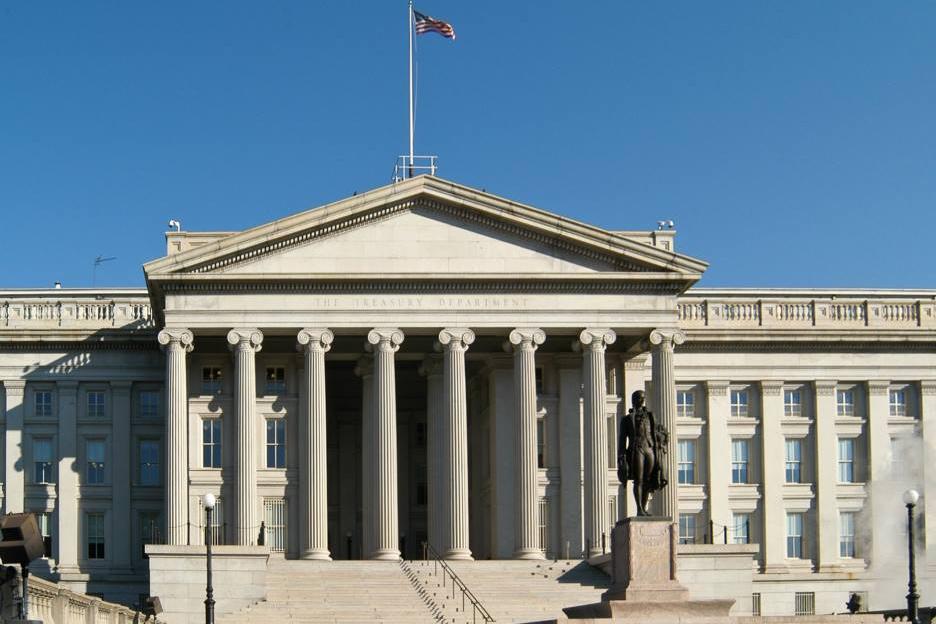
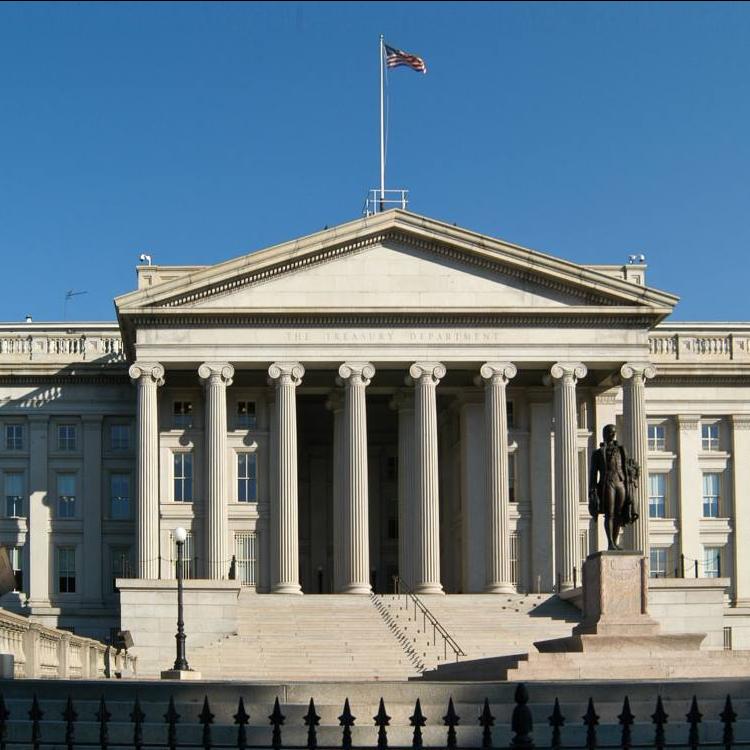
The U.S. Department of the Treasury in Washington, D.C.
The U.S. Department of the Treasury has long been tasked with managing the nation’s finances. Historically, it’s not a part of the executive branch that has weighed in on social issues such as racial equity.
Times are changing, however. The Treasury brought on its first counselor for racial equity last fall. And while critics of the current administration have faulted it for not moving fast enough on what they say are the most stubborn challenges confronting society, in fairness this White House is the first that is attempting to have honest discussions about systemic racism here in the U.S.
Comments this week from the current treasury secretary, as well as the CEO of BlackRock, indicate that staying the course isn’t an option to secure racial equity and the long-term economic security of everyone.
Editor's note: Be sure to subscribe to our Brands Taking Stands newsletter, which comes out every Wednesday.
We’ll start with National Action Network’s Annual King Day Breakfast this Monday, during which U.S. Secretary of the Treasury Janet Yellen said: “[Martin Luther King, Jr.] knew that economic injustice was bound up in the larger injustice he fought against. From Reconstruction, to Jim Crow, to the present day, our economy has never worked fairly for Black Americans — or, really, for any American of color.”
It's not unusual for political leaders to tout their policies in different ways to appeal to various segments of the U.S. public. What stands out, however, is an admission that the system isn’t working — especially for someone heading a government agency that oversees a segment of the economy that has long held back people of color, whether it has turned a blind eye to redlining, dubious loan practices and other ways that prevented too many Americans from building wealth over the years.
“Today, redlining might be gone, but it hasn’t stopped Black folks from being held out of a frothy housing market that’s generating wealth for almost everyone else,” wrote Keith Reed for The Root. “So while Yellen didn’t say anything paradigm shifting, she did capture something that today’s sanitized — and often disingenuous — remembrances of King leave out: that the foundation of his nonviolent movement for Black freedom was more about demanding economic redress than it was appealing to white folks' good nature so that we could all just get along.”
Meanwhile, BlackRock CEO Larry Fink released his annual letter to CEOs, a ritual he has continued despite the fact he and his company have had to deal with accusations that they are driving what critics call “woke capitalism.”
This year, Fink reminded business executives that the pandemic has helped shaped a new reality between companies and workers, and not adjusting to this landscape can leave many firms behind. He added that despite corporate America’s silence on the country’s racial divide, many of its rank-and-file employees have not.
“In addition to upending our relationship with where we physically work, the pandemic also shone a light on issues like racial equity,” Fink wrote, “and revealed the gap between generational expectations at work.”
He also asked, “How are you ensuring that employees of all backgrounds feel safe enough to maximize their creativity, innovation, and productivity? How are you ensuring your board has the right oversight of these critical issues?”
True, the attention Fink’s annual letter receives is often matched with criticism, usually over how his company’s actions don’t necessarily align with his words; take his stance on fossil fuel divestment, for example. Credit him for shining light on America's current problems, however, and pushing business leaders to do their part.
As always, the follow-up is far more important than the actual words that Yellen and Fink spoke and wrote this week. Nevertheless, the conversations they have launched on matters such as racial equity would have been unthinkable a few short years ago.
Image credit: The U.S. Department of the Treasury via Facebook
22 New Plant-Based Foods Coming to Market in 2022


Plant-based pepperoni is coming to the menu at U.S. fast-casual pizza chain Donatos. (Image courtesy of Donatos)
Sales of plant-based foods are booming, and the segment is poised to reach $37.9 billion in market value by 2027. As more consumers gravitate toward flexitarian diets — in other words, eating less meat and enjoying more meals without it — brands are coming to market with a rapidly expanding array of plant-based foods that tout a taste and texture that's just like the real thing. Here are a few standouts, coming soon to restaurants and retailers near you. (If you plan to sample some of them, please remember to do so safely: Wear a mask, keep your distance and be kind to frontline workers.)

KFC serves up plant-based fried chicken at all U.S. locations
KFC has been quietly looking to add plant-based foods to its lineup for the past several years. It started testing a plant-based version of its classic fried chicken with Beyond Meat back in 2019 and expanded the trial to restaurants in Nashville, Charlotte and Southern California a year later. Now, the final version of Beyond Fried Chicken is here, and it rolled out to all U.S. restaurants on Jan. 10.
We can likely expect more plant-based offerings from KFC in the near future, thanks to a recent partnership between Beyond Meat and the chain's parent company, Yum Brands, which also owns Pizza Hut and Taco Bell — both of which have their own new plant-based options cooking.
Burger King dishes out plant-based chicken nuggets in the U.K.
While Burger King partners with Beyond Meat competitor Impossible Foods for its plant-based take on the Whopper in the U.S., in other markets its key partner is the Vegetarian Butcher, a Unilever-owned brand popping up at a growing collection of restaurants and retailers worldwide. The two brands launched another take on the Whopper in Europe, Latin America and China in 2020, followed by the Vegan Royale (a plant-based alternative to Burger King's original chicken sandwich) in the U.K. last year.
This year, U.K. customers can get their snack on with plant-based nuggets, too. The new BK menu option is one of several recent collaborations from the Vegetarian Butcher, including the new Tu’NAH Sandwich at Starbucks U.K.

Chipotle spices up the new year with vegan chorizo
After trialing a vegan take on spicy chorizo sausage at select restaurants in Denver, Indianapolis and Orange County last summer, fast-casual Mexican chain Chipotle rolled the option out to all U.S. locations at the start of this year. Made from pea protein blended with chipotle peppers and spices, the new filling brings a touch of heat with none of the meat.
The move adds to Chipotle's roster of plant-based foods, including its vegan "sofritas," a spicy braised tofu filling that's been a hit among customers for over a decade.

Pizza Hut puts plant-based sausage on the permanent menu across Canada
Following trials around Toronto and Edmonton last summer, Pizza Hut is rolling out plant-based Italian sausage at its more than 450 restaurants across Canada. Canadian customers can try out the new meat-free sausage on three dishes: a pizza with vegetables, a loaded flatbread and an Alfredo pasta. Pizza Hut has also tested plant-based pepperoni in the U.S. and other Italian sausage dishes in the U.K. as part of parent company Yum Brands' ongoing partnership with Beyond Meat.
Startups Umaro and Hooray Foods take a crack at vegan bacon
Spied at the Plant-Based World Conference and Expo in December: two new takes on plant-based bacon that are coming to market in 2022. The first comes from vegan bacon veteran Hooray Foods: After selling over a million strips of its original vegan bacon recipe, the brand plans to launch a 2.0 version later this year, reports plant-based food blog Vegans Baby. Not to be outdone, San Francisco upstart Umaro Foods has its own version made from seaweed that is set to launch in May.

Startup Ilinel Food Company launches a line of Latin-inspired plant-based foods
Guatemalan-born entrepreneur Harry Lewis left his job in the corporate world to found the Ilinel Food Company, a culinary startup focused on affordable nutrition and Latin American food culture. The company's first consumer brand, Casa Verde, comes to market with four ready-to-eat meals developed in partnership with Iron Chef alum Jose Garces.
The recipes offer a plant-based take on a solid lineup of Latin American favorites, including red bean pozole and garbanzos al pastor. Unlike many items on our list, these babies are based on good ol' veggies and legumes rather than fake meat, and in a nod to home-grown Latin food culture, all of the vegetables, beans and spices are sourced from fresh produce markets in Mexico and cooked in kettles just like in mama's kitchen.

Cold Stone Creamery debuts its first vegan dessert
Cold Stone Creamery released its first plant-based frozen dessert at the start of the year in partnership with dairy-free brand Silk. The new creation, Don't Cry Over Spilled Milk, is made with Silk's chocolate almond milk, banana, peanut butter and roasted almonds.
Meanwhile, Silk is introducing an updated almond milk at grocers across the U.S. Silk's new Extra Creamy Almondmilk is made from three types of almonds for what the Danone North America brand says is the smoothest and, ahem, silkiest dairy-free experience yet.

Canadian chain Mary Brown’s puts two meatless chicken options on the menu
Two new plant-based options hit the menu at Mary Brown's Chicken at the start of this year. The chain's new meatless tenders and chicken sandwiches come courtesy of a partnership with plant-based protein purveyor Lightlife.
With an expansive retail lineup and partnerships with other restaurants like Canadian fast-casual chain Pizza Pizza, Lightlife is a plant-based brand on the rise. As an interesting side note: It's owned by Greenleaf Foods, a plant-based spinoff that Canadian meat company Maple Leaf Foods launched back in 1997. That investment — made before plant-based foods were en vogue — has paid off, as both Lightlife and Greenleaf's other major brand, Field Roast, are taking over real estate on store shelves in the U.S. and Canada.
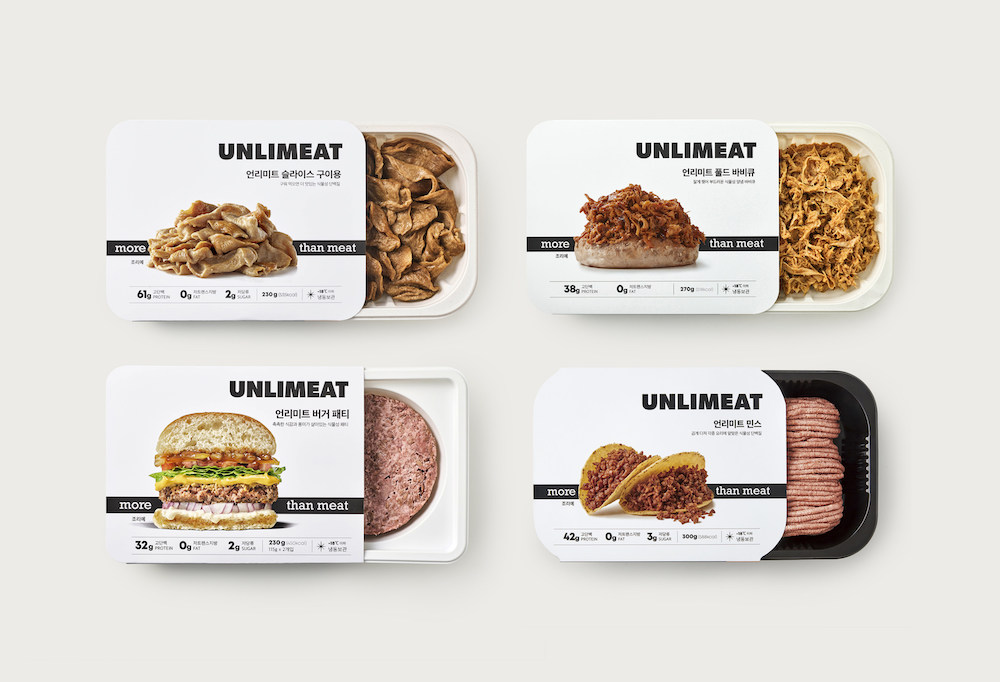
South Korea's leading plant-based meat brand is coming to the U.S.
Unlimeat, one of the top plant-based foods brands in Asia, is coming to the U.S. The brand burst onto the scene in 2019 with a plant-based take on sliced meat made from ingredients like soy, pea protein, coconut oil and rice flour. Since then, it has added to its portfolio with products like plant-based minced meat for burgers and tacos and a pulled barbecue meat that resembles slow roasted pork.
Unlimeat's lineup is already available to U.S. customers online, and the brand plans to collaborate with restaurants on menu items in 2022 before launching at brick-and-mortar retail locations stateside.

Plant-based pepperoni hits the menu at Domino's U.K., while U.S.-based Donatos gives it a try stateside
Domino's U.K. is giving plant-based pepperoni a try in partnership with the Vegetarian Butcher. The new launch adds to an impressive roster of plant-based foods at the fast-casual pizza chain in the U.K., including a Margherita pizza topped with a vegan cheese variety developed in-house by Domino’s.
Meanwhile, in the U.S., a plant-based pepperoni developed by Greenleaf Foods brand Field Roast is coming to the menu at pizza chain Donatos. Known for its keto-friendly pizza crusts made from cauliflower, Donatos has more than 150 locations across the U.S. South, Mid West and Mid Atlantic. Field Roast's plant-based pepperoni made from pea protein will be available on two new cauliflower pizzas alongside fresh veggies and dairy cheese. You can also find Field Roast's take on plant-based pepperoni at Little Caesars restaurants across the U.S.

Frozen yogurt favorite Yogurtland adds new plant-based option made from oat milk
With over 250 locations across the U.S. and around the world, Yogurtland is one of the top chains for everyone's favorite guilt-free summer snack. It has created more than 200 custom flavors since it launched in 2006, and in 2022 it will add a new plant-based variety to the list. Made from oat milk, the new dairy-free choice adds to an impressive lineup of vegan options previously launched at Yogurtland — including dairy-free piña colada, salted chocolate and oatmeal cookie yogurt flavors, as well as açaí bowls and fruit bowl fusions.
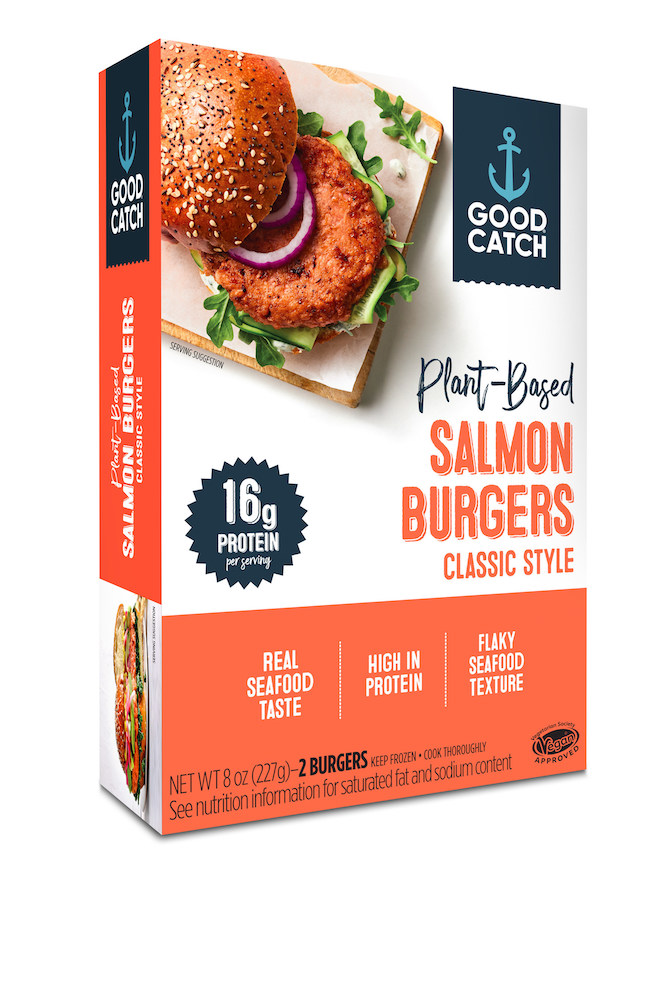
Good Catch brings a plant-based salmon burger to grocery stores
The first fish-free salmon burger is headed to U.S. store shelves this month courtesy of plant-based seafood brand Good Catch. Slap it on a bun or add it to a recipe to enjoy the country's most popular seafood without the sea.
This latest launch adds to the brand's lineup of plant-based foods in the seafood segment, including fish fillets and crab cakes, that are already available in grocery chains including Whole Foods, Tom Thumb, Sprout's and Giant. Seafood chain Long John Silvers also trialed the brand's analog seafood at select stores in Georgia and California last year.
Vegan Babybel cheese is coming to grocers the U.K.
Okay, U.K. readers: Stop what you're doing right now, because vegan Babybel cheese is arriving near you. The plant-based twist on the cult favorite classic first popped up at Sainsbury's late last year and will roll out to more major retailers in the coming months, according to parent company Bel Group.

Ben & Jerry's rolls out two new dairy-free flavors
Ben & Jerry's started making non-dairy desserts back in 2016, in response to consumer demand and even petitions from ice cream lovers looking for plant-based choices from the fan favorite brand. The Vermont-based company has since rolled out non-dairy versions of classic favorites like cookie dough and Cherry Garcia, using an almond or sunflower base, and created some brand-new flavors exclusively for the non-dairy line.
The latest arrivals feature Ben & Jerry's "core" innovation, which allows fans to customize each bite with a special treat in the middle — in this case, salted caramel for the new bananas foster flavor and gluten-free cookies for the new mocha and caramel mix called Boom Chocolatta. The new flavors, along with a mint chocolate recipe developed with Chance the Rapper that debuted last month, bring Ben & Jerry's non-dairy options to 18 — almost 40 percent of the brand's entire flavor lineup.

Sandwich chain Blimpie introduces plant-based meatball parmesan
Sandwich chain Blimpie rolled out its first plant-based sub last week: a hot parmesan sandwich with plant-based meatballs from old-school analog meat brand Gardein. The company says it plans to test the sandwich until April 3, so don't wait too long to try it.

Jamba mixes it up with new plant-based smoothie
Ready to start 2022 off right? Smoothie giant Jamba has you covered with The Go Getter, its latest plant-based concoction made with matcha green tea, mangos, kale and orange juice. "Filled with three servings of veggies but still tastes like mangos: It's the life hack we've always wanted," the brand wrote on Instagram. The new drink complements an impressive lineup of plant-based foods at Jamba, including a toasted breakfast sandwich featuring a plant-based sausage patty from Impossible Foods.
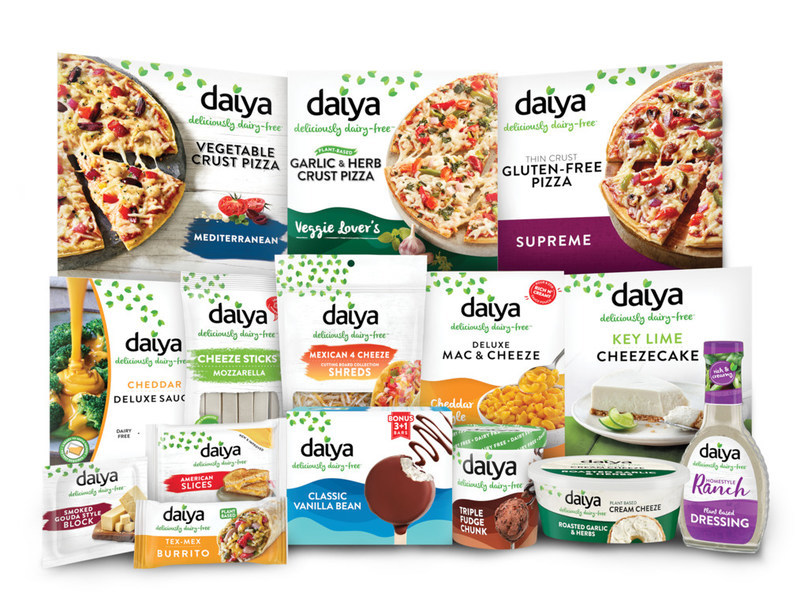
Daiya Foods expands to South Korea
Popular dairy-free brand Daiya is expanding its reach yet again. The brand's lineup of plant-based cheeses, dressings, desserts and prepared meals will soon be available at restaurants and grocery stores in South Korea thanks to a recently inked sales deal with local distributor Hyundai Green Food. The brand is already sold in about 20 countries across the Americas, Europe and Asia, racking up loyal fans wherever it goes.

The Coffee Bean & Tea Leaf adds a plant-based breakfast sandwich featuring Beyond Sausage
The Coffee Bean & Tea Leaf is best known as a corner cafe serving beverages, baked goods, and cold sandwich and salad options, but the chain made the move to install ovens in all of its company-owned stores in California and Arizona for first time this year.
This simple shift allows the chain to offer toasted versions of customers' favorite choices and expand the menu to include new options like its first plant-based breakfast sandwich, in partnership with Beyond Meat. Clearly targeting flexiarians more than vegans, the new sandwich features the analog meat brand's Beyond Sausage patty alongside cage-free eggs and provolone cheese.

LikeMeat's plant-based party pack is ready for the Super Bowl
LikeMeat is one of the top success stories to come out of the LiveKindly Collective, a plant-based protein accelerator founded in 2020 that also includes U.K. plant-based packaged foods purveyors No Meat and Oumph!. LikeMeat burst onto U.S. store shelves back in 2013 with a lineup of plant-based chicken alternatives including wings, nuggets and pulled barbecue. Being acquired by LiveKindly in 2020 helped LikeMeat to grow its reach, and this year it's coming to Sam's Club with a new party pack size that's perfect for the big game.

Marks & Spencer massively expands its in-house plant-based foods brand
U.K. retailer Marks & Spencer recently announced a massive expansion of its meat-free Plant Kitchen line. New additions like lasagne, fish-free fish fingers and no-lamb shawarma bring the Plant Kitchen lineup to a stunning 175 products, reports the food blog Plant-Based News. From ready-to-eat prepared meals to scratch-cooking ingredients and sweet treats, each item is tested by the retailer's in-house chefs to ensure "it tastes just as good or even better than its meat or dairy counterpart."
Not Taking Any Bull: Employees Say Bye to the Bully Boss


If the post-pandemic workforce coined a slogan equivalent to the 1970s song and catchphrase “Take this job and shove it,” it just might be “No more working for jerks.” In other words, so long to the insufferable bully boss.
Emboldened by the autonomy of working from home for almost two years, employees have become more outspoken about what they want from jobs and supervisors. And with huge numbers of employees heading out the door — a record-high 4.5 million Americans quit their jobs in November alone — employers need to take notice. The fact that so many workers are quitting suggests that they are confident they can quickly find other jobs or strike out on their own; or, they feel that the daily dose of toxicity at the workplace is no longer worth the paycheck.
“The tolerance for dealing with jerky bosses has decreased,” Angelina Darrisaw, chief executive of the firm C-Suite Coach, said in a recent New York Times article. People are realizing that the stress, indignities, and unpleasant personalities they had accepted as standard parts of office life are mostly non-existent in their home offices.
Bullying also is a larger part of work culture than many people realize. A 2019 poll by Monster revealed that 90 percent of employees said they had been bullied at work, and in 51 percent of the incidents, it was the bully boss at the root of their stress.
Bosses who are bullies are different from ones who are exacting and demanding. While demanding bosses treat all employees the same way, a boss who is a jerk is generally defined as one who torments a few employees or only one.
Hiring leaders with this personality type may seem counterproductive for companies, but often, the typical bully boss initially comes across as friendly; moreover, they are good at hiding the unpleasant aspects of their nature, looking successful and when mistakes occur, dodging the blame.
Employees who are subjected to regular bullying can suffer physically and mentally. Studies have shown that standing up to a bully boss not only improves work life, but an employee’s mental health as well. Confronting a toxic manager helps employees feel better about themselves, because they no longer feel like victims, and they earn the respect of coworkers, according to a 2015 study. For the most part, confronting the boss also did not negatively impact careers.
As the economy picks up and many businesses struggle to find enough employees, companies are being forced to look at their cultures and give more weight to workers’ demands. One positive note: In a January 12 survey of 133 executives by PwC, fewer than one in five of them said they wanted work life to resume functioning the way it did before the pandemic.
“If you’re a business leader and you want to recruit the best talent you can, you need to start prioritizing and doing the work of creating conscious culture,” according to Janine Yancey of the human resources training firm Emtrain in the aforementioned Times article from earlier this month.
Key to that new culture for many workers is flexibility. In May, 39 percent of 1,000 U.S. adults who were surveyed in a poll conducted by Morning Consult on behalf of Bloomberg News indicated they would consider leaving their jobs if their employers weren’t open to remote work. The number was even higher when it came to Millennials and Gen Z; almost half said the inability to work from home could prompt them to leave.
A sense of empower that has not been seen in decades is building in the workforce, as publications, including Time, have noted. Last summer, Adrienne Barnard, a longtime human resource professional, told the magazine that “[employees] are recognizing, ‘You need me, and if I leave, it’s going to be hard to replace me.’”
In other words, if the bully boss can’t or won’t play nice in the sandbox, his or her direct reports are confident they can find a far more tolerable sandbox.
Image credit: Yan Krukov via Pexels
World Leaders Need to Commit to Improving Nutrition Education to Deliver a Brighter Future


Reliable access to affordable, nutritious food is something many of us take for granted. But for more than two decades, the dark reality of food insecurity has spread to every corner of the world. The onset of the global pandemic further exacerbated food insecurity, hitting a five-year high, according to an annual report by the Global Network Against Food Crises (GNAFC). The report explains that at least 155 million people experienced acute food insecurity across 55 countries in 2020, an increase of around 20 million people from the previous year.
Wealthier countries are also feeling the impact of food insecurity. Feeding America reported that in the United States, 60 million people turned to food banks, food pantries, and other private food assistance programs in 2020. The increased demand proved to be too much for many organizations, which worked around the clock just to keep up with their beneficiaries. But providing enough food for those who need it is just one part of the equation. Making sure minimum nutritional requirements are met is even more important. According to a global research study we commissioned in March 2021, many are unaware of those requirements, which include a balanced diet of fruits, grains, protein, vegetables and dairy and limiting food and beverages high in added sugars, saturated fats, and sodium.
Ending hunger is one of the world’s most pressing needs and has been prioritized within the United Nations’ Sustainable Development Goals. Not only does this issue continue to worsen, but it impacts other factors like physical and mental development, including a child’s ability to concentrate in school, which often impacts upward economic mobility. With more opportunity for education, grows the potential for equitable nutrition solutions.
Education is the first step in enabling change, access, and empowerment. Sustainable transformation begins through education and resources that help people adopt a healthy, active lifestyle. Those resources must be accompanied by affordable nutrition in order for communities to thrive. As we continue to move forward with the commitments outlined in our global responsibility report, we are already looking into what more we can do to make this transformation a reality.
Eradicating hunger: A multi-pronged approach
As a former pediatrician and public health official, I have witnessed firsthand the profound impact that reliable access to good nutrition can have on both individual and community health.
Eradicating hunger and malnutrition involves more than just putting food in people's mouths – we must also educate people on what good, balanced nutrition looks like and empower them to make informed decisions to achieve a healthy life. By focusing on education and providing communities new ways to access nutrition, those living in food deserts (low-income areas with limited access to fresh produce or other food) will be in a better position to drive change in their communities. We are seeing this work being done around the world through public and private partnerships. And since 2019, Herbalife Nutrition and the Herbalife Nutrition Foundation* have worked with leading non-profit organizations which support more than 164 million people in over 80 countries through our global Nutrition for Zero Hunger initiative to address global hunger issues, including World Food Program USA, Feed the Children and Asociación Mexicana de Bancos de Alimentos (BAMX), among others.
Collective effort toward global health and success
As we enter our fifth decade as a company, we are focused on nourishing people while taking care of our planet. Those goals lead to a healthier world.
Given the enormity of the global issues we are talking about, no single entity will successfully solve them. Governments, non-governmental organizations, and businesses must work together to make a meaningful impact. Tangible, measurable results require hard work, perseverance, and an unwavering commitment to change.
Nutrition education and sustainable business practices are imperative to ensure global health and success. Addressing these priorities can create a more level-playing field and enable us to better serve our communities.
*The Herbalife Nutrition Foundation is a public charity, not a subsidiary or affiliate of Herbalife Nutrition. HNF chooses to join Herbalife Nutrition in some charitable initiatives. HNF has donated approximately $1.4M in financial aid, and Herbalife Nutrition has donated approximately $2.1M in financial aid and in-kind gifts, to non-profit partners as a part of Nutrition for Zero Hunger.
This article series is sponsored by Herbalife Nutrition and produced by the TriplePundit editorial team.
Image credits: Bonnie Kittle and Luisa Brimble via Unsplash
Commemorate MLK Day With Voting Rights, Say Business Leaders


The Martin Luther King Jr. Memorial in Washington, D.C.
Martin Luther King Jr. Day comes at a particularly fraught time, considering the state of racial relations across much of the U.S. and the fact that at the present time, the chances any federal laws designed to secure the right to vote for all citizens appear slim to none. The current state of affairs, in fact, have pushed King’s family last month to urge “no celebration” of this year’s MLK Day unless the U.S. Congress passes any meaningful voting rights legislation.
To that end, King’s daughter, Dr. Bernice A. King, who’s CEO of The King Center, has called for a “shift” in how we commemorate MLK Day, as in:
“We must shift our thinking and our perspectives in recognition of our interconnectedness and interdependence. We must shift power and resources to eradicate racism, inequity, and poverty. We must shift our energy and time to focus on the authentic so that we do not explore the artificial, including A.I., without heightened attention to our moral and ethical responsibility as well as our accountability to humanity.”
On the topic of accountability, as in voting rights and protecting democratic norms, business leaders are getting the hint that something needs to happen on this front.
For example, a recent Morning Consult poll of 400 business executives found that the future of U.S. democracy is a leading concern. At a rate of approximately 75 percent, executives agreed on topics ranging from supporting the two major federal bills that are designed to ensure and protect voting rights; support amending Senate rule so such legislation could pass; and 85 percent agreed with the statement that “capitalism is dependent on a well-functioning democracy.”
And last week, a coalition of small business groups, led by the American Sustainable Business Network, expressed a similar sentiment, saying they are united “to express their opposition to the attack on voting rights and support the United States Senate passing voting rights legislation using filibuster reform to protect the fundamentals of American democracy.”
Many founders and CEOs of marquee companies and brands, including Etsy, Patagonia, Reddit and Twilio, sent a letter to the U.S. Senate’s leadership urging them to find a way to pass both voting rights bills. “The stability afforded by our democratic system of government and our open economy are the cornerstones of American innovation and our economic dominance around the world,” are among the points these executives made a week ago.
True, the impatience that many citizens and business executives currently feel is shared by some political leaders such as President Biden, who last week voiced support for bypassing the filibuster in order to allow voting rights legislation to pass with a simple majority in the Senate. Professional athletes have lent their names and voices to this call as well.
Here’s the rub: MLK Day offers us the reminder that sentiment, letters and public statements are steps in the right direction, but they alone aren’t getting the work done. The hard part is actually convincing political leaders that such legislation benefits all U.S. society.
Furthermore, while the overriding issue this month is voting rights, the same can be said for racial equality and climate change. The bottom line is that MLK Day should be one in which we can celebrate progress instead of reminding politicians that yet again, they need to get their act together if we are to move forward.
After all, remember that King himself didn’t only write letters. He marched and went above and beyond as he put himself out there.
“Business’ public messaging has shifted dramatically in recent years, with much more emphasis on societal issues like climate change, racial equity, and voting rights,” Michael E. Porter and Daniella Ballou-Aares wrote for the Harvard Business Review last fall. “Yet today, when we are presented with a once-in-a-decade opportunity to support federal legislation addressing these challenges, business leaders are not backing up their words with action.”
For more on Martin Luther King Jr.’s approach toward striving that all U.S. citizens would have the fundamental right to vote, this op-ed on The Hill from last summer is a fine start.
Image credit: Dineda Nyepan via Unsplash
As with the Rest of the Private Sector, the NFL Overlooks Black Talent in Management


The NFL would prefer that we would only tune into Wild Card Weekend, but it’s difficult to tune out the fact that as of press time, only one of the 32 head coaches across the NFL is Black. That head coach is Mike Tomlin, who has never had a losing season as head coach of the Pittsburgh Steelers.
The dearth of Black head coaches continues even though about 70 percent of the NFL’s players are Black. Nevertheless, during the 100-year history of the NFL, less than three dozen head coaches in total have been Black.
“In 2003, NFL franchise owners had to be prodded to seriously consider Black candidates to coach their teams,” said columnist Michael Cunningham of the Atlanta Journal-Constitution. “They were willing to sign Black players make them money while risking their health. They were reluctant to let them lead their teams after they were done playing. Once those Black coaches got more opportunities, they proved they should have had them all along."
Cunningham is referring to the “Rooney Rule,” which beginning in 2003, required NFL franchises to interview people of color for head coach openings. Since then, the league has gone backwards on the diversity front. In 2018 alone, five Black NFL head coaches were fired; each of them was replaced with a White coach.
Could it be the attitude that NFL’s White owners have toward their Black employees?
“It is clear those NFL franchise owners are in favor of Black men doing one thing: battering their brains and bodies as players, for their own entertainment and their own bank accounts,” Yahoo Sports’ Shalise Manza Young concluded in her column last week. “Until, that is, players retire and want what's due to them.”
Going back to Tomlin: He has appeared to set the bar high for NFL head coaches. While talented Black assistant coaches are making their mark across the NFL, they have been consistently been overlooked as the NFL has turned to young, relatively inexperienced and White coaches, especially after the Los Angeles Rams found success after hiring Sean McVay. In addition, there has been no shortage of White coaches who have scored second chances: fans will point to examples such as Pat Shurmur (Browns and Giants), Adam Gase (Dolphins and Jets) and Doug Marrone (Bills and Jaguars).
“Teams are ultimately going to hire the coach they want to hire, but the striking imbalance between white and minority coaches suggests that it’s not the Rooney Rule that’s the problem, but team leadership,” the Guardian’s Gabriel Baumgaertner wrote at the end of the 2020 NFL season. “With so much turnover – remember that over 60 percent of teams have made at least one coaching change in the past three years – it’s confusing that veteran black coaches like [Jim] Caldwell and [Leslie] Frazier aren’t given another opportunity.”
As for the real world, or shall we say the private sector, it’s not much better for people of color. Black executives make up only 8 percent of the leadership ranks within the 50 most valuable U.S. companies, according to a recent Washington Post survey. And despite the large body of research that suggests diversity within corporate leadership is linked to improved performance, it’s an even larger struggle for women of color.
To their credit, more investors are pressuring companies to change their ways; State Street Global Advisors, for example, announced last week it’s telling companies to include at least one woman and a person of color on their board if they expect the investment management giant to support them during the upcoming proxy season.
In a widely quoted 1956 address, Martin Luther King, Jr. said, “we must rise above the narrow confines of our individualistic concerns, with a broader concern for all humanity.” More than 65 years later, that bit of advice certain applies to how we approach hiring our colleagues. It’s easy to simply hire the person with whom we feel more comfortable.
The problem is that too many of us often hire people who often look and think like us. To sum up a 2019 Harvard Business Review article, “exclusion is visible in many organizational processes.” The hard part is hiring someone who’s certainly qualified and brings a lot to the table but comes from a different background and has life story than the hiring manager. But with the way many of our professional networks are structured, far too many people will be excluded from opportunities – in both the NFL and across the private sector.
Image credit: Stephane Coudassot-Berducou via Unsplash